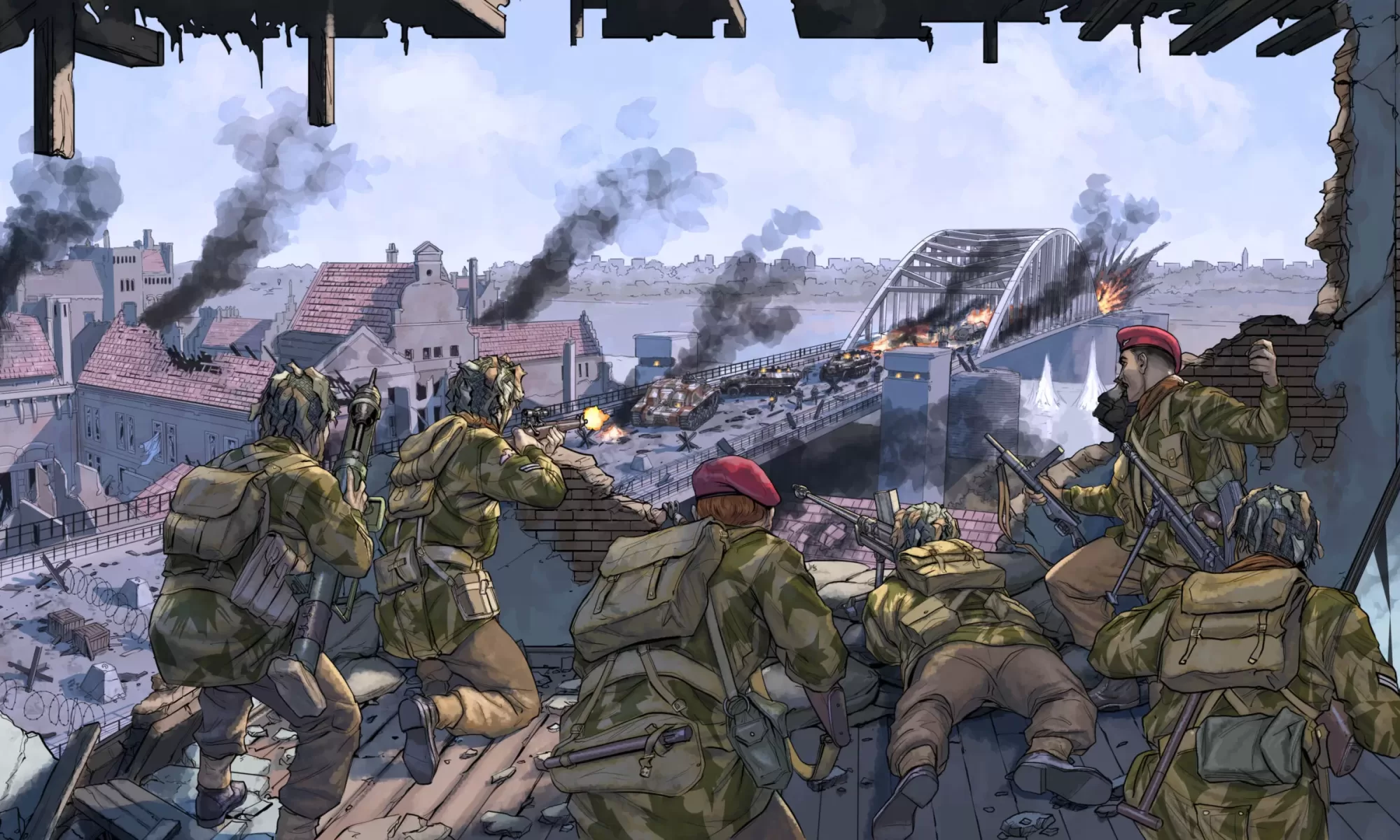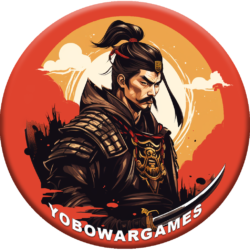With the upcoming launch of Battle for Iwo Jima, I thought it was about time I had a logo video prepared that I can add to the start or end of future trailers.
Let me know what you think.
With the upcoming launch of Battle for Iwo Jima, I thought it was about time I had a logo video prepared that I can add to the start or end of future trailers.
Let me know what you think.
Battle for Iwo Jima Steam store page is now live:
And as a reminder, you can buy it now on itch.io.
Its been a while since I have posted an update (always seems to be something more important to do!) so thought I would spend a few minutes giving an update on how things are going.
First up is Valor & Victory. I have been working on the scenario Editor and PBEM Modules. Both are large pieces of work but I am hoping the early versions of both will be working by the end of August. After that comes a lot of testing to make them both as robust as possible. Then I need to finish working on the initial 4 scenarios and make sure they are ready for a possible Alpha test group.
Below is an early screenshot of the scenario editor.

My plan is to make available as many configurations of the maps as possible so there are lots of possibilities for scenarios designers to work with.
Next up is Iwo Jima. I plan to release this in 2020 but have some background work going on.
Below are the new map and the first draft of the units. I think the map looks really good and was designed by Marc von Martial who does a lot of map work for board versions of wargames.
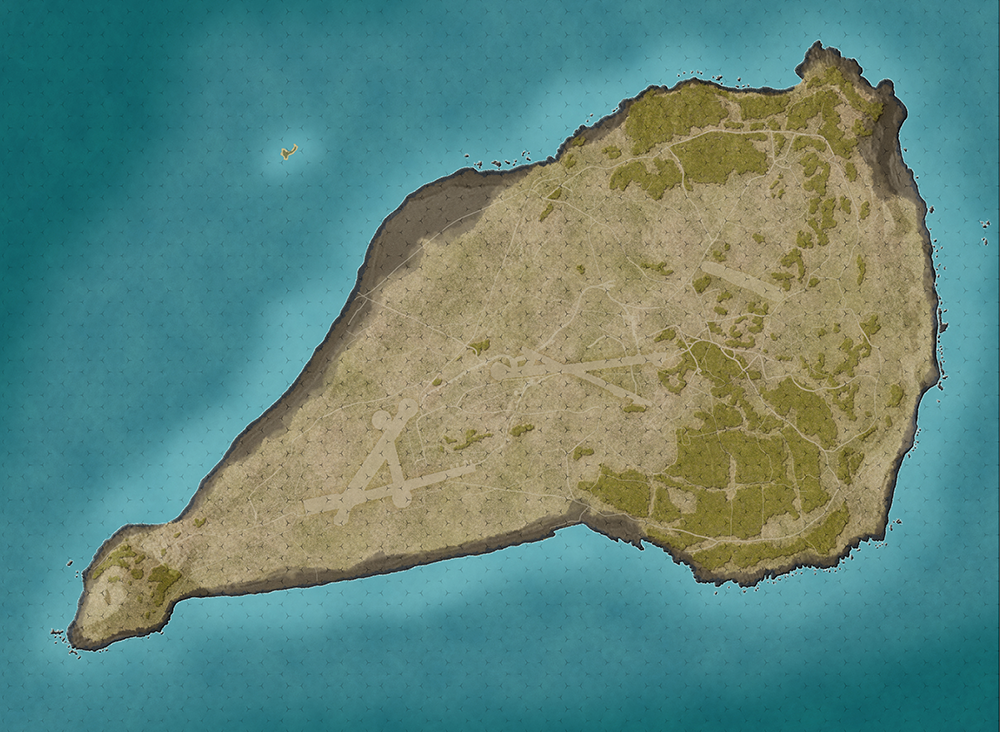




Next is a little teaser of KRIM: VON MANSTEIN’S BATTLES FOR SEVASTOPOL, 1941-42. I am working on this game together with Bruin Bear Games. More detailed updates to come on this soon.

And finally… Picketts Mill which is way off into 2020 but I had the unit’s graphics worked on. I am trying something different here with the units being hexagon shaped. This will allow the units to have a facing if I decide to implement that in the game.

December 2016 I formulated a 3 year plan to see if I could turn writing wargames as a hobby into something a little more serious and able to make money
Today was a big step forward to achieving that goal with Matrix Games taking over publishing duties of some of my games. Those of you that follow my blogs will know that marketing is one of my weak points so having the experts in to do this is I hope is going to be a great help.
I originally signed with them about 3 months ago but it has taken a while to sort out the logistics of transferring the games to their ownership on the various app stores and fix a few issues they thought would improve Korsun.
For me its a very proud moment to see my games grace the front page of Matrix games and to see my games listed on their store pages.
http://www.matrixgames.com/products/800/details/Battle.for.Korsun
Its been a little while since I have posted an update. Not because I don’t have much to say but because I have been working hard in the background to make some great things happen for Yobowargames.
So today’s announcement is that I reached out to Ty Bomba to see if I could work on digital versions of some of his older games. Being the great guy he is, he said yes and so the first one I will be working on is Krim: von Manstein’s Battles for Sevastopol, 1941-1942 that first appeared in Command Magazine #6.
The map graphics for this game will be by Marc von Martial who has worked on great games for Lock
In addition, I will be working on this game with Casey Bruyn from BruinBear Games. The theory being two developers then twice the production speed!
I don’t yet have a firm date for the release of this game but certainly looking to get it out a little later this year. As a small taster here is a first draft of the map from Marc.

And don’t worry work on Valor & Victory is continuing at a fast pace. More big announcements on that coming soon.
Tonight I will be pushing the release button on Steam to push live Invaders From Dimension X. I have been working closely with Mark Walker at Tiny Battle Publishing, who publish and sell the original board game, for the last year.
Mark will be actively
We are already talking about the next game to work on and I will share more information on that once the dust has settled on the Invaders launch.
In between work, developing my games, being a dutiful husband/father and a million other things I also attempt to play wargames (solo).
Currently on my table, handily next to my computer where I do most of my development, is Ted Raicer’s “When Eagles Fight” from GMT games.
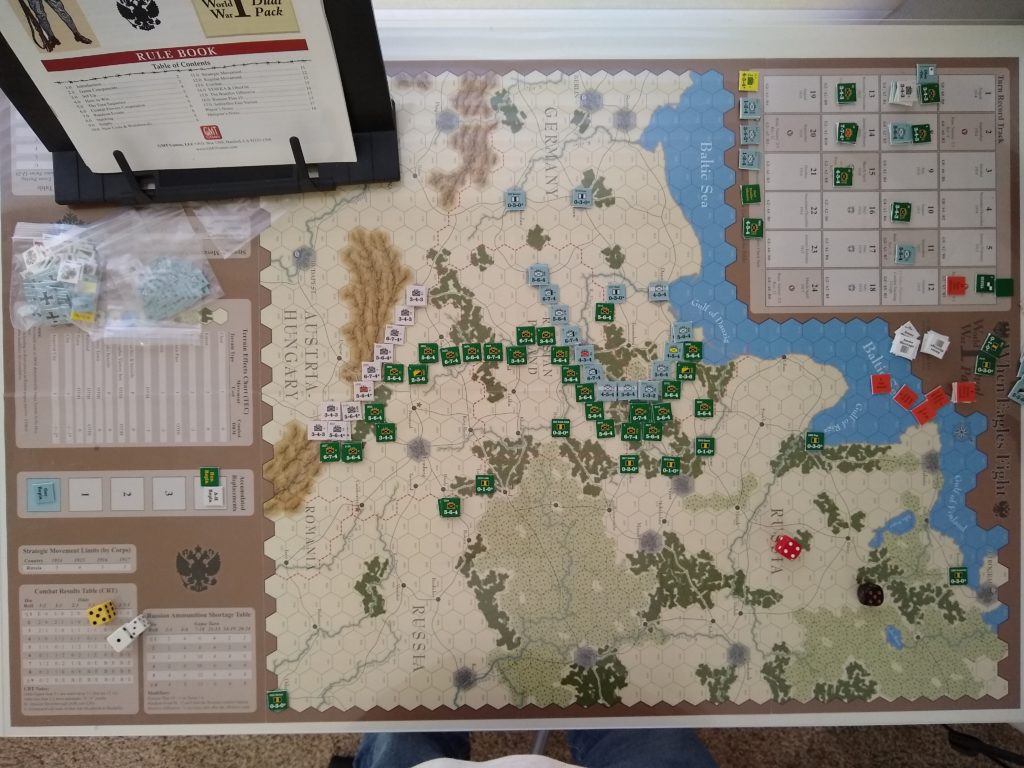
I brought this in the GMT sale and set it up during the Christmas break. I have managed to reach turn six and am really enjoying it (I might reach out to Ted/GMT to see if they are interested in turning this into a computer game). Coincidently if you are interested in WW1 eastern front then I can fully recommend Prit Buttar’s 4 book series – Eastern Front in World War I.
I am sure I am not the only one that leaves a game setup for while and returns to it periodically. However have you noticed how said such game seems to attract a disproportionate amount of dust compared to anything else in the nearby region?
Now since I don’t have a gaming room everything is set up in our main living room. So now I have a game that:
Luckily my wife’s birthday is soon and so I can temporarily delay the “Isn’t it time you cleared that up” conversation that is surely coming with a suitably big bribe gift.
If you have any solutions to the dust problem do let me know!
Its raining here in California and used that as an excuse to play with some unit graphics for a civil war game I work on during such times.
In this game, unit facing will be important and I have been struggling a little to get something that looks good.
Today I decided to try hexagon shaped chits. I think I might need to make them a little smaller to allow for stacking. The Orange edging indicates facing and which Brigade its attached to.
I am also struggling to get the units name on without cluttering the chits too much. I am thinking that in the game if you hover over the unit you can get those details.
Please feel free to ping me if you have an opinion on these (lance@yobowargames.com)
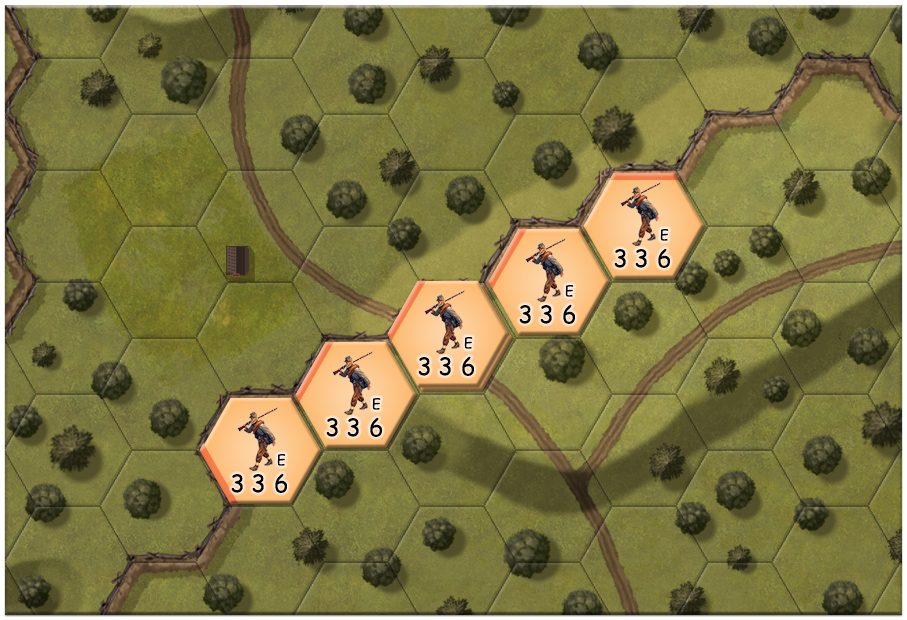






There has a been growing trend in the software world to move to a subscription-based or In-app purchase (also known as microtransactions) model. Take as examples Microsoft Office365 or Adobe Photoshop where you pay a monthly subscription fee and in return get all the latest features and updates. We are also seeing this trend in the gaming world with games such as World of Warcraft that charge a monthly fee or Epic Games’ Fortnite that has in-app purchases for such things as outfits, gliders, pickaxes and dance moves. This model is also being replicated in the wargaming world with premium accounts for World of Tanks or in the form of extra downloadable content (DLC) such as in Slitherine’s’ Order of Battle.
Typically, the base game is free to download and can either be played for free with a limited amount of content or enhanced by in-app purchases. The advantage to this model is that the game player continues to get new content and a game, if successful, that is supported for years beyond its original release. For the software company, they get loyal customers, regular cash flow and the ability to forecast future income. For this type of model to be financially successful, you will need a fairly large pool of players willing to constantly spend money on the game.
As an example of a wargame utilizing an as a service model imagine buying an American Civil War game that has one battle depicted on its first release – say the first battle of Bull Run. As a fan of the game, you could then buy extra scenarios or battles and then these would appear as playable options in the game. You might even be able to buy extras such as customized counters or flags or additional music to play in the game.
However, this business model has had major implications for how mobile games are produced. As prices to sell games dropped developers moved to in-app purchases to generate revenue and now it’s extremely hard to sell a premium game for anything more than a few dollars. In-app purchases don’t tend to work well with a typical wargame – $1 for that extra panzer division and there goes the historical accuracy. It is no longer financially viable for most developers (I admire John Nuutinen and his continual output of games supporting Android) to develop a wargame aimed solely at iOS or Android. Users expect to pay next to nothing, or indeed nothing, and get a AAA quality game. Most hardcore wargamers will, I am sure, have noticed the lack of support for wargames on these platforms compared to the PC.
On the PC, premium pay (one-time purchase) games continue to sell well although the downward pressure on prices continues and will increase as more games adopt the model of software as a service going forward. I don’t, however, believe we will see the race to the bottom that happened with mobile games.
For a developer, there are huge risks in developing a game that you will release for free and then hope that fans of the game will either buy in-app items or DLC. Now multiply that risk by developing for a niche market such as historical wargames that are further sub-divided into particular interests such as ACW, WW2 etc. Oh, and add in the fact 100’s of games, of all types, are being released every week and getting visibility for your game is a mammoth effort in of itself. This means we are likely to see only established wargame studios/publishers successfully adopt this model. So, what does this mean for the future of computer-based wargames?
Could we see publishers like Slitherine move to fully adopting wargames as a service model? I am sure they would prefer it due to the benefit of regular income and the ability it gives to forward plan compared to the famine and the then hopeful feast of releasing premium games. However, us wargamers are a very traditional bunch and like the French Guards at Waterloo will resist to the last.
Two years ago I setup Yobowargames and work in my spare time as a solo Indie developer. Since I also have a full-time day job I would classify myself as a hobbyist indie developer but, where possible, adhering to business principles. In that time I have released two games with another about to launch and currently working on my fourth game.
My games are targeted at a niche strategy wargame market that I know well as a consumer and now as a software developer. I use Libgdx and develop using Android Studio. By using Libgdx I can produce games in Java that run on PC, Android, and iOS with very little additional work needed between the three of them.
I set myself a three-year goal with the following objectives.
Year 1 – Produce and publish my first game.
Year 2 – Produce more games and build a small following
Year 3 – Produce a larger more advanced game that makes money
The purpose of this article is to provide some updated statistics and things I have learned in the first two years.
Facts and Figures
My first game Kursk – Battle at Prochorovkawas greenlighted by Steam in Feb 2017, moved into alpha and then officially launched in July 2017. As it was my first game I was very nervous about doing any marketing in case the game was not well received. So apart from my blogs I did zero marketing and did not send it for any reviews. My wife was so worried about it failing that she was secretly planning to purchase the game so I had at least one sale.
My second game, Battle for Korsun, was launched at the end of October 2018. This time I did send the game out to a couple of reviewers and one of them did a favorable review. In addition, the game was picked up by a few other bloggers or YouTubers who I had not contacted.
My third game, Invaders from Dimension X, will launch in January 2019 with the support of the original board game producer, Tiny Battle Publishing.
Below Are my main sources of revenue in 2017 and 2018. The biggest difference between 2017 & 2018 is that itch.io has proven to be a fairly valuable source of crowdfunding for a new game I am working on – Valor & Victory.


Below are unit sales for Kursk – Battle at Prochorovka since launch. The peaks are Steam sales. This covers almost 2 years of sales. I only discount 25% during sales and did no discounts in the first year. I might sell more if I did a heavier discount and will try that in the summer sale. Launching my second game led to more sales for this, my first, game. My games have a long tail with this game earning 40% of total gross income in year 2.

This next chart shows sales by region for Kursk – Battle at Prochorovka. This game is only available in English.
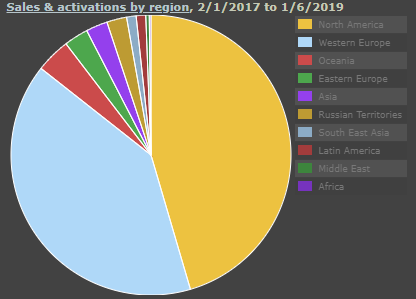
This next one shows sales by region for my second game, Battle for Korsun, which I did localize into French, Russian, Chinese, Spanish and German. This has led to a slight increase in sales in China but seemed to have little to no effect elsewhere.
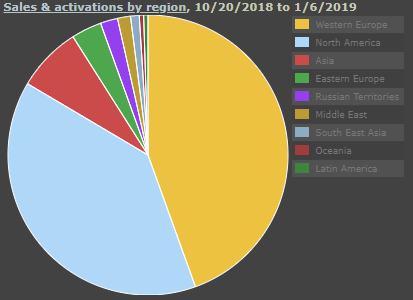
Financially I have recouped the costs of making the first two games and financed the cost of the next 2 games. However, do note I do not charge for my time spent on these games and could not seriously think about making this a full-time vocation.
Things I have learned
Summary
I have learned a lot in the last two years and consider it time well spent. This year will be the real test as I never expected to make any money in the first two years. Covering all development costs has been a bonus.
